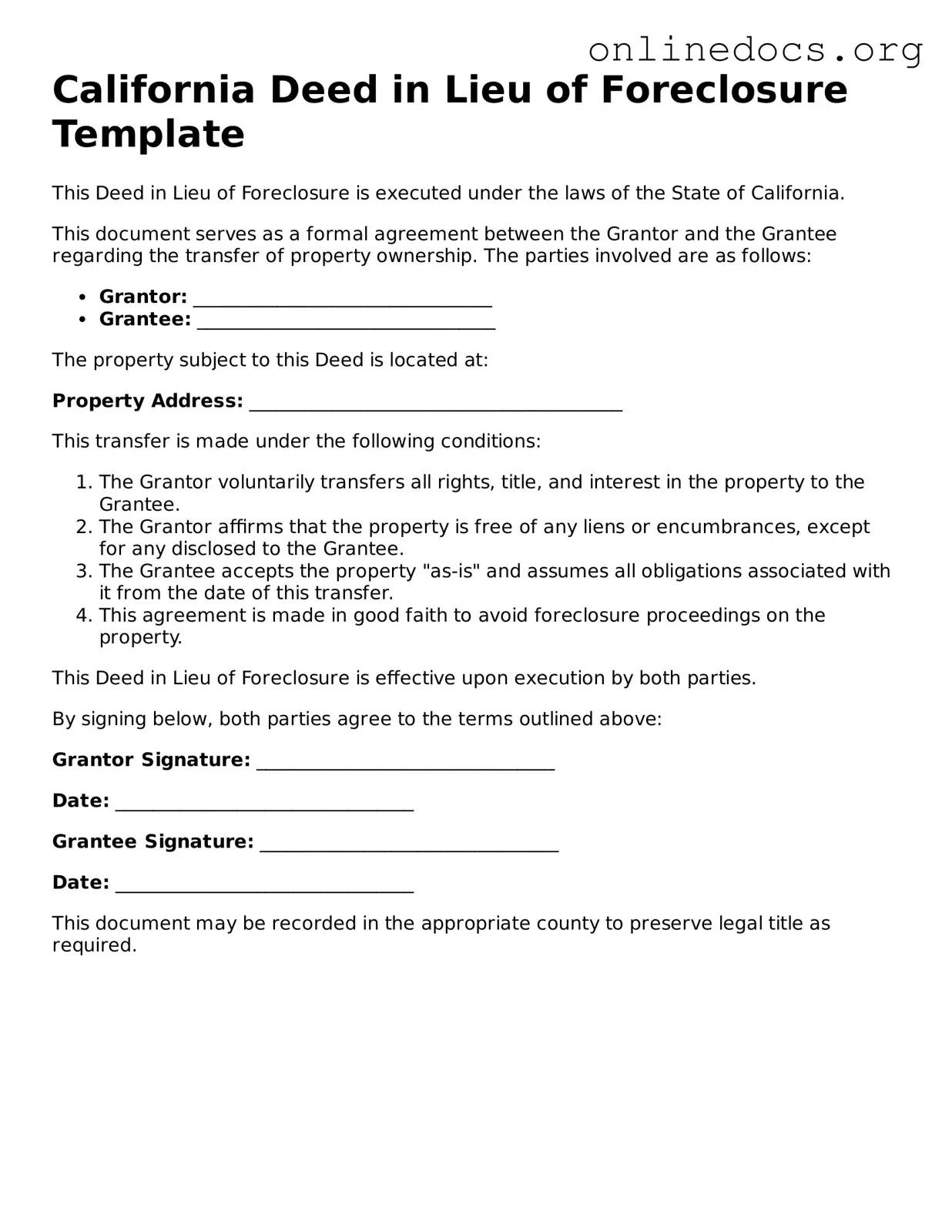The California Deed in Lieu of Foreclosure form shares similarities with a Short Sale Agreement. Both documents facilitate the transfer of property ownership from the borrower to the lender, aiming to avoid the lengthy and costly foreclosure process. In a short sale, the lender agrees to accept less than the total amount owed on the mortgage, allowing the homeowner to sell the property to a third party. Like a deed in lieu, this option can help the homeowner mitigate financial damage and provide the lender with a quicker resolution to the defaulted loan situation.
Another document that resembles the Deed in Lieu of Foreclosure is the Loan Modification Agreement. This agreement allows borrowers to change the terms of their existing mortgage to make it more manageable. While a deed in lieu involves transferring ownership, a loan modification keeps the borrower in the home. Both options aim to address financial difficulties and provide relief, but they do so through different mechanisms. Each serves as a potential solution to avoid foreclosure while offering distinct pathways for the homeowner.
When dealing with the nuances of motorcycle ownership, it's essential to properly document the transfer of a motorcycle, which can be achieved through the California Motorcycle Bill of Sale. This legal document provides clarity and protection for both the buyer and seller, ensuring all necessary details are captured for a seamless transition. To explore the process further and access the required form, visit https://californiapdfforms.com/motorcycle-bill-of-sale-form.
A Forebearance Agreement also shares characteristics with the Deed in Lieu of Foreclosure. This document allows borrowers to temporarily pause or reduce their mortgage payments due to financial hardship. In this case, the lender agrees to delay foreclosure proceedings while the borrower gets back on their feet. Similar to a deed in lieu, the goal is to avoid foreclosure, but a forbearance keeps the borrower in possession of the property for a set period. Both documents reflect a cooperative approach between the lender and borrower to find a solution to financial distress.
Lastly, a Bankruptcy Filing is another document that relates closely to the Deed in Lieu of Foreclosure. Filing for bankruptcy can halt foreclosure proceedings and provide the borrower with a fresh start. While a deed in lieu involves voluntarily transferring the property, bankruptcy allows individuals to reorganize or eliminate debts. Both options can lead to the loss of property but do so through different legal processes. Each serves as a tool for borrowers facing insurmountable financial challenges, offering different paths to resolution.
